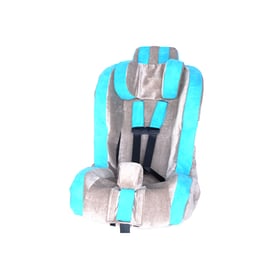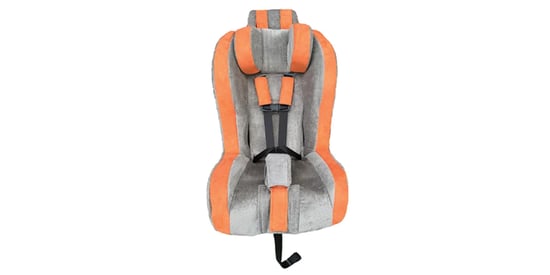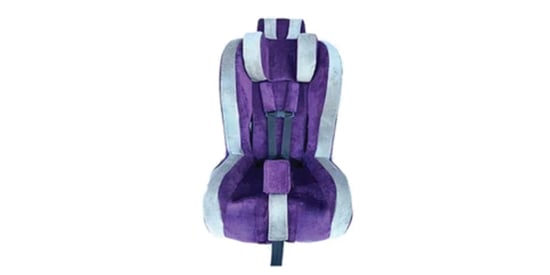The Roosevelt™
This car seat is specially designed for children with special health care needs and who weigh between 35 and 115 pounds.
Specifications
- Minimum weight: 35 pounds
- Maximum weight: 115 pounds
- Minimum height: 33.5 inches
- Maximum height: 62 inches
- Shoulder width maximum: 15.5 inches
- Thigh width maximum: 14.5 inches
- Shoulder strap heights:
12.5 inches
15 inches
17.25 inches
19.75 inches
22.25 inches
Features
- Padded seat extenders provide optimum seat depth for each leg.
- Any combination of depths is available.
- Height from seat bottom to seat top is 30 inches.
- Our “EZ-Tether” system makes tethering unnecessary in most cases, simplifying the installation in older vehicles.

Options
'EZ-Guard' Buckle Cover
Designed to prevent the occupant from releasing the car seat harness buckle.
Chest Clip Guard
The chest clip guard prevents the occupant from pushing down or unfastening the chest clip.
A-Lok Cover
Designed to prevent the occupant from operating the car seat harness adjuster.
Instructional Video
Coming Soon
 'Quick-Change' Incontinent Cover
'Quick-Change' Incontinent Cover
Eliminate time-consuming removal of cover, harness, etc. Just remove the leakproof incontinent cover, wash and replace it in no time.
Instructional Video
Instructions - English
Instrucciones - Español
 3-inch Seat Depth Extender
3-inch Seat Depth Extender
Adds 3 inches to the depth of the seat. Provides a 15.5 inch total seat depth.
Instruction Video Coming Soon
4.5-inch Seat Depth Extender
Adds 4.5 inches to the depth of the seat. Provides a 17 inch total seat depth.
Instruction Video Coming Soon
 'EZ-Up' Headrest System
'EZ-Up' Headrest System
Developed for occupants with poor head control. The Ez-Up head rest offers lateral support. When used with an Ez-Up cap, the Ez-Up head rest system prevents head from falling forward.

Foam Abductor
The Foam Abductor (pommel) stays firmly in place while in use due to unique attachment design. Pivots away for easy transfer.
Scoliosis Harness Kit
Independent bilateral hip adjustors and extra foam pads allow therapists to optimally position the child by filling any gaps behind the child’s back.
















